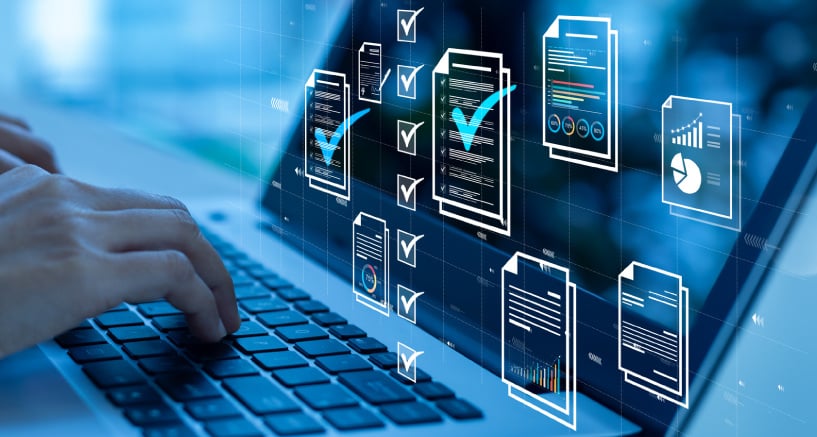Does your company want to receive and process electronic invoices? Not simple PDFs, but invoices that are in a structured electronic format that are becoming mandatory in many countries? With Outlook and DocuWare, this works soooo smoothly. Find out how here...
Content:
More and more countries are introducing e-invoicing requirements. In Europe, this is happening against the background of the EU VAT reform. According to this, the invoice formats in all member states must comply with the European standard EN16931.
This means that from 2025 onwards, e-invoices must have a structured electronic format that enables data to be processed automatically. This is a text file in which the invoice data is contained in a fixed hierarchical structure.
A wide variety of invoice formats
DocuWare enables the receipt and processing of numerous formats, such as XRechnung and ZUGFeRD from Germany , KSEF from Poland or Fattura PA from Italy, to name just a few. However, numerous e-invoice formats from other countries such as Mexico, are also standard.
DocuWare makes the e-invoices, which are actually only readable by machines, readable by the human eye in the viewer, similar to a PDF.
All other documents that are based on the XML markup language, such as e-invoices, are also processed automatically and reliably. These can be, for example, delivery notes that are part of the invoicing process.
Here's how it works
DocuWare archives e-invoices that are received as e-mail attachments in Microsoft Outlook and reads the invoice data in the process. To do this, you save the invoices in Outlook folders, from which DocuWare automatically fetches them for archiving and data extraction. The invoice data can then be used efficiently for other processes – for example, in a workflow for comparing the invoice with a purchase order and delivery note.
This only needs a few settings:
- In Outlook, you insert an inbox folder once for each required e-invoice format.
- In DocuWare, you create an import configuration for each of the Outlook folders with the settings for reading the data.
You are ready to receive and process e-invoices in a legally compliant manner.
On any system
In DocuWare Cloud, you can immediately use the full functionality for receiving and processing e-invoices that you receive by e-mail. You just need to install Connect to Outlook from the Client Setup.
If you are using DocuWare as a local system, Connect to Outlook is available as an add-on module.
You can also read why reporting models in e-reporting could be important for your tax reporting in the future.


